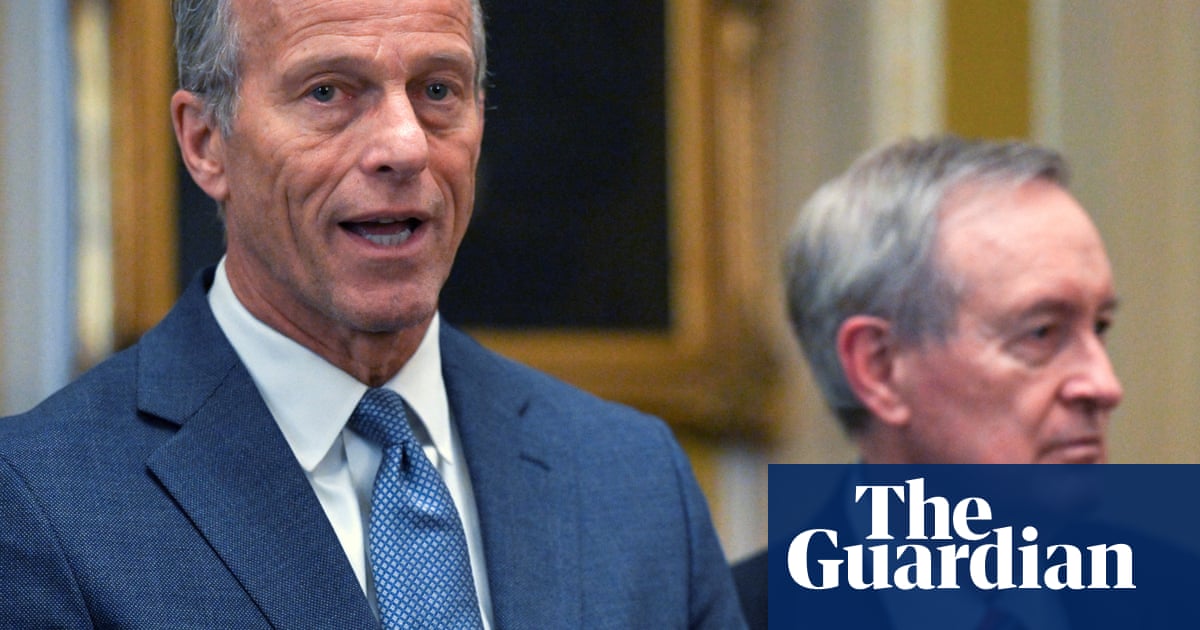The Controversial Path of Trump’s Sweeping Policy Bill
When Donald Trump’s ambitious policy bill landed in the Senate a few weeks back, its arrival was met with a crescendo of skepticism and concern from various factions. This legislation, touted as Trump’s top legislative priority, was strategically designed to avoid the filibuster, ensuring that Democrats could not impede its progress. However, the daunting implications of the bill rippled through the Republican ranks, especially concerning cuts to significant safety net programs like Medicaid.
Republican Reservations
At the heart of the discord was a proposal that suggested severe cuts to Medicaid, the health care safety net for poorer and disabled Americans. Such cuts raised alarm bells, even amongst conservative lawmakers. For instance, Sen. Josh Hawley from Missouri openly voiced his concerns, publishing an op-ed in the New York Times titled, “Don’t Cut Medicaid.” His apprehension stemmed from the impact that proposed changes could have on working-class constituents—those who had rallied behind Trump in the previous election.
The Bargaining Process
As the clock ticked down to July, less than a month after the bill’s introduction, Republican leaders faced the daunting task of consolidating support. The bipartisan skepticism created hurdles, and moderates like Sen. Rand Paul and North Carolina’s Sen. Thom Tillis expressed strong reservations regarding the bill’s potential to exacerbate the budget deficit, projected by the Congressional Budget Office (CBO) to soar by $3.3 trillion by 2034.
In a noteworthy political move, Trump publicly criticized Tillis, leading the senator to announce his decision not to seek re-election. Such dissent among Republicans opened avenues for Democratic strategists to eye this crucial North Carolina seat.
Compromises to Gain Support
As the pressure mounted, Senate leaders crafted several compromises to appease the moderates. Hawley, for instance, saw the introduction of a $50 billion special fund aimed at supporting rural hospitals—an issue he had championed for years. This last-minute negotiation raised eyebrows, demonstrating how far leaders were willing to go to unite their party. Hawley maintained his stance, stating, “If Republicans want to be the party of the working class, we cannot cut health insurance for working people,” in response to ongoing concerns about Medicaid.
Despite these adjustments, the bill was anticipated to leave a staggering number of people uninsured. The CBO projected that by 2034, an additional 11.8 million citizens might lack health coverage due to the measure.
The Final Vote
As the Senate approached the crucial vote, Republican Susan Collins expressed her disapproval, specifically citing the adverse effects the bill would have on Medicaid. Her dissent paralleled the sentiments of other Republicans, including Paul and Tillis, who all stood against it alongside Democrats.
Meanwhile, the leverage of moderate Sen. Lisa Murkowski from Alaska became pivotal. Known for her willingness to break ranks with her party, her eventual support came at the cost of targeted concessions for her state, such as increased tax deductions for Native Alaskan whalers. This strategic infusion of state-specific provisions was key to securing her vote.
Democrats’ Response
With the bill teetering on the edge of passage, Democrats could do little more than watch the fray unfold and propose amendments that often fell flat. Senate Minority Leader Chuck Schumer seized the moment following the bill’s passage to issue a stern warning. “When their electric bills go up, when their premiums go up, when kids and parents lose SNAP funding, the people of America will remember this vote,” he declared, hinting at the long-term implications of the bill’s adverse effects.
Though the bill ultimately found enough support to pass with Vice President JD Vance casting the tie-breaking vote, the repercussions of this legislative battle could resonate within the Republican Party, as members grapple with the implications of their collective decision on future elections.
In a political landscape often marked by fervent debate and division, the process leading to the passage of Trump’s policy bill offers a vivid illustration of compromise, dissent, and the complex maneuvering that defines contemporary governance. As the clock continues to tick, all eyes remain on the ripple effects that this bill will cast across the political spectrum in the months ahead.


